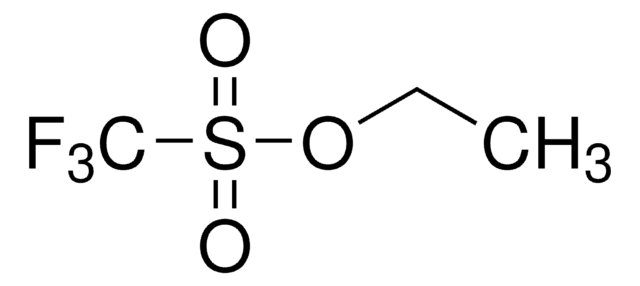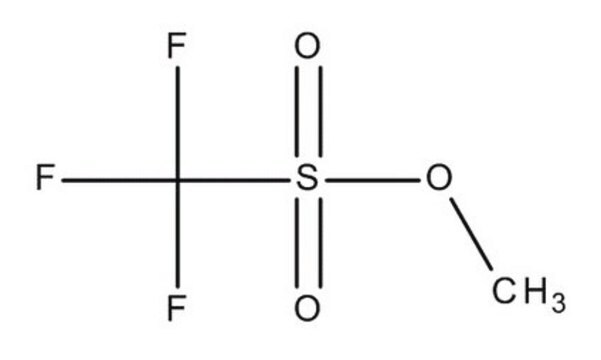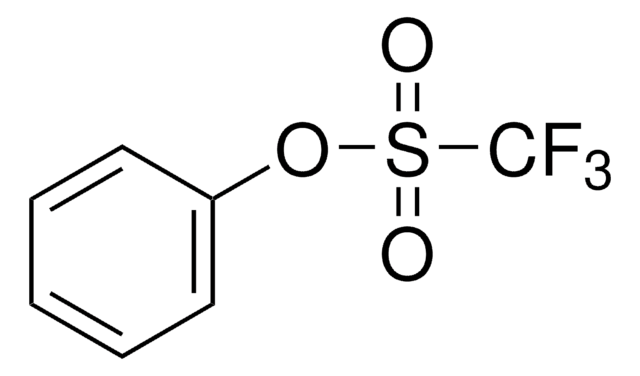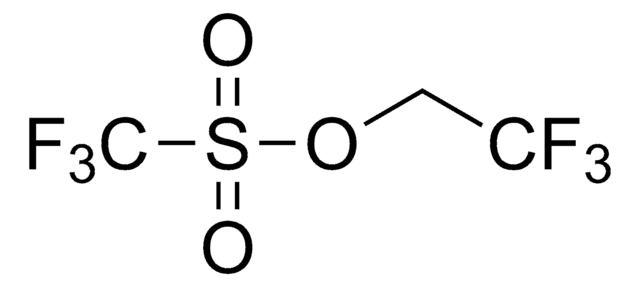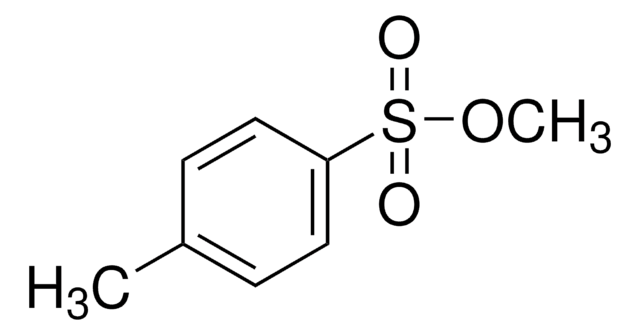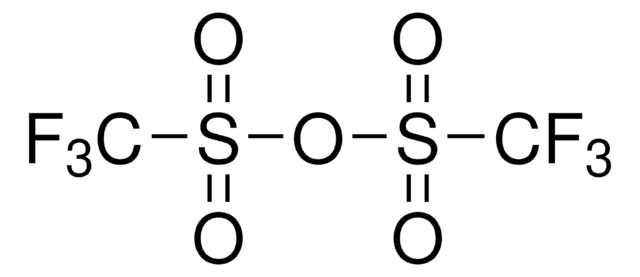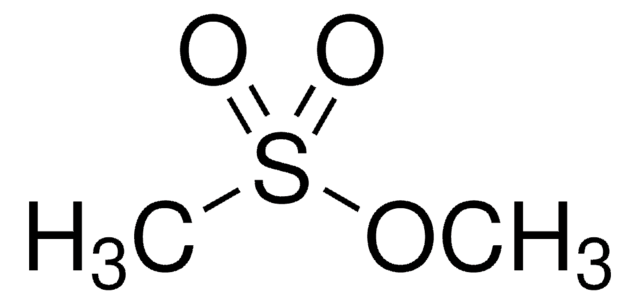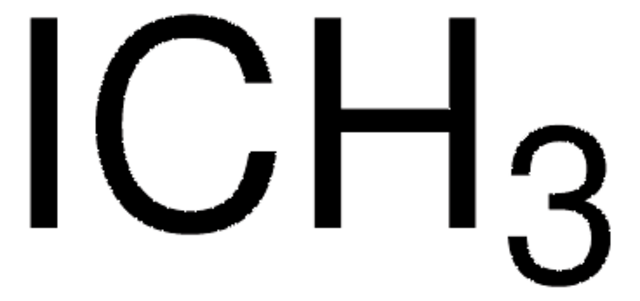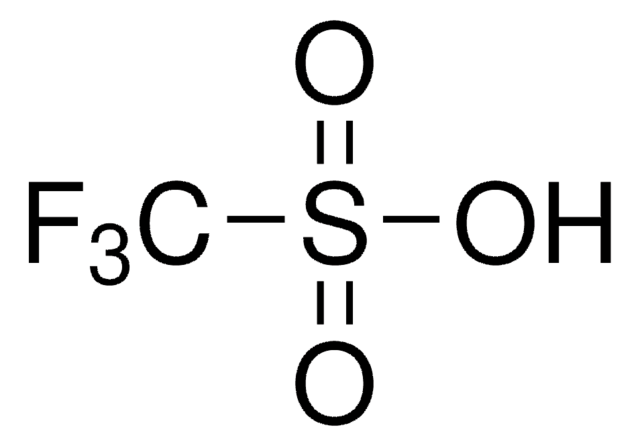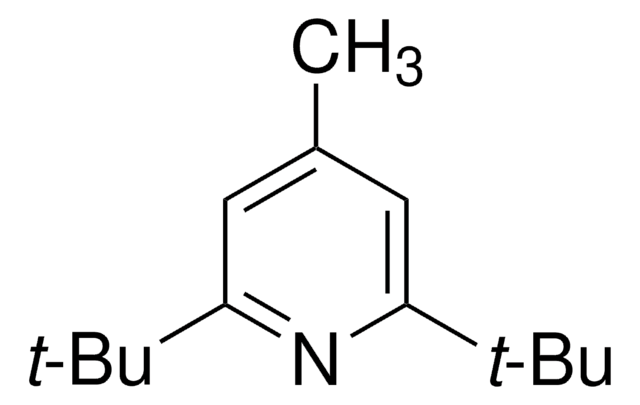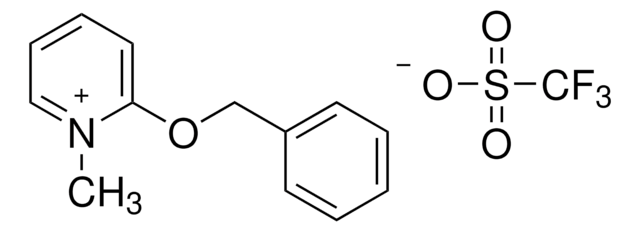164283
Methyl trifluoromethanesulfonate
≥98%
Synonyme(s) :
Methyl triflate
About This Item
Produits recommandés
Niveau de qualité
Essai
≥98%
Forme
liquid
Indice de réfraction
n20/D 1.326 (lit.)
pb
94-99 °C (lit.)
Densité
1.45 g/mL at 25 °C (lit.)
Groupe fonctionnel
fluoro
triflate
Température de stockage
2-8°C
Chaîne SMILES
COS(=O)(=O)C(F)(F)F
InChI
1S/C2H3F3O3S/c1-8-9(6,7)2(3,4)5/h1H3
Clé InChI
OIRDBPQYVWXNSJ-UHFFFAOYSA-N
Vous recherchez des produits similaires ? Visite Guide de comparaison des produits
Description générale
Application
- In the determination of polysulfides, zerovalent sulfur in sulfide-rich water wells, and polysulfide species in electrolyte of a lithium–sulfur battery using chromatography-based techniques.
- In reactions with potassium enolates.
- For the conversion of amines to methyl ammonium triflates.
À utiliser avec
Mention d'avertissement
Danger
Mentions de danger
Classification des risques
Acute Tox. 1 Inhalation - Acute Tox. 3 Dermal - Acute Tox. 3 Oral - Eye Dam. 1 - Flam. Liq. 3 - Skin Corr. 1B
Code de la classe de stockage
3 - Flammable liquids
Classe de danger pour l'eau (WGK)
WGK 3
Point d'éclair (°F)
100.4 °F - closed cup
Point d'éclair (°C)
38 °C - closed cup
Équipement de protection individuelle
Faceshields, Gloves, Goggles, type ABEK (EN14387) respirator filter
Faites votre choix parmi les versions les plus récentes :
Déjà en possession de ce produit ?
Retrouvez la documentation relative aux produits que vous avez récemment achetés dans la Bibliothèque de documents.
Les clients ont également consulté
Global Trade Item Number
| Référence | GTIN |
|---|---|
| 164283-1KG | |
| 164283-50G | 4061838748058 |
| 164283-10G | 4061838748041 |
| 164283-250G | 4061833397930 |
| 164283-5KG |
Notre équipe de scientifiques dispose d'une expérience dans tous les secteurs de la recherche, notamment en sciences de la vie, science des matériaux, synthèse chimique, chromatographie, analyse et dans de nombreux autres domaines..
Contacter notre Service technique